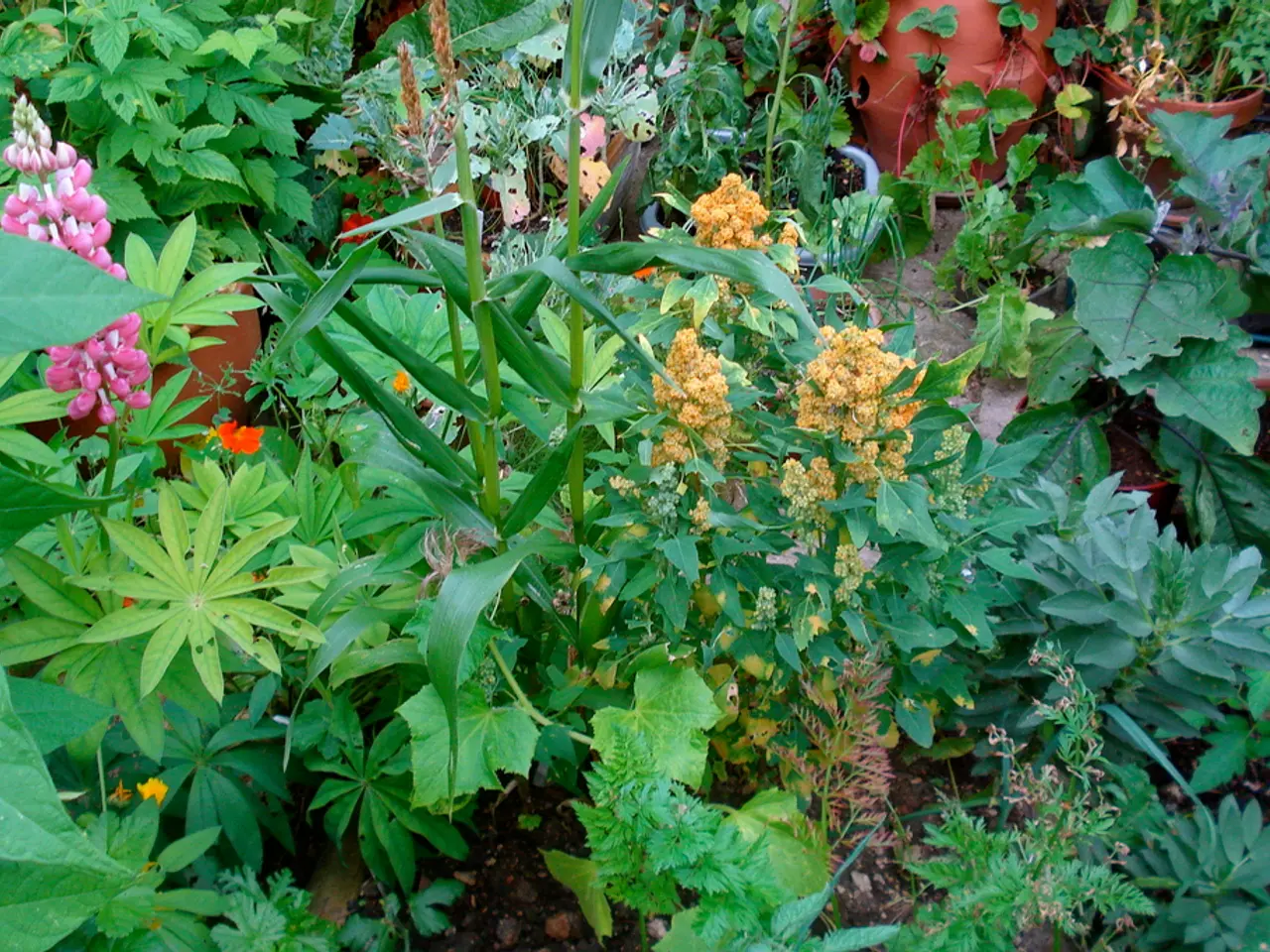Creating a Vibrant Potager Garden: A Step-by-Step Guide
In the heart of France, a timeless tradition thrives—the potager garden. This unique form of kitchen garden is designed to be both beautiful and functional, seamlessly blending flowers, fruits, herbs, and vegetables in an attractive, harmonious layout.
A potager garden stands out for its mixed planting of edible and ornamental plants. Vegetables, herbs, edible flowers, and fruits grow together, creating a vibrant, seasonally changing "living painting." The garden emphasizes visual appeal, using colors, shapes, and textures to create an orderly, enjoyable space often adorned with decorative pathways and beds.
Practical benefits abound in a potager garden. The strategic inclusion of flowers like marigolds and nasturtiums attract pollinators and beneficial insects while repelling pests, enhancing vegetable yield and soil health. A potager garden serves as a source of fresh produce and herbs while enriching the gardener’s sensory experience through beauty and fragrance.
The benefits of a potager garden are far-reaching. By growing a diverse range of edible plants in the same space, productivity is increased. Pest management and pollination are improved through the strategic inclusion of flowers that attract beneficial insects. The garden's enjoyment is enhanced since the area is both useful and pleasing to the eye, offering sensory delight alongside food cultivation. Space is efficiently used by integrating multiple plant types in an organized, elegant format.
Interconnecting paths in a potager can be made of various materials—paving, stone, gravel, or stone chippings on a weed-proof membrane, or grass, although the latter requires regular mowing and can become muddy. Raised beds are beneficial for a formal potager garden due to their accessibility, easy no-dig cultivation, and addition of good soil depth if the site soil is shallow, poor, slow to drain, or heavy-textured.
Boundaries for a potager can take various forms, such as a formal clipped hedge, a framework for climbing edibles, rustic wattle hurdles, a picket fence, or fruit trees trained in fan, espalier, or cordon shapes. The central feature of a potager garden can be a square, circular, or more ornate bed with a sundial, bird bath, pergola, or decorative water feature.
Decorative varieties of crops, such as Swiss chard with red or rainbow-colored stems, lettuces with frilly or colored leaves, and courgettes with yellow fruits, can enhance the look of the potager. Upright features like obelisks, archways, frameworks, or pergolas can be used to create more growing space for climbing plants.
Strawberries are small and fit in almost anywhere in a potager garden. Blueberry bushes need acid soil but can be grown in large tubs if the soil doesn't suit. Miniature hedges or hedge-like edging plants, such as catmint, dwarf lavender, hyssop, wall germander, or bushy thyme, are classic elements of potager gardening style.
Many tree, currant, and berry fruits work well in potager gardens. Examples include tree fruits trained into shapes like step-over espaliers, fan, cordon, or taller espaliers, and tall-growing berries like loganberry, tayberry, and blackberry trained as fans or on frames.
Companion planting, the practice of growing flowers that attract pollinating or pest-eating insects or have properties that repel pests and diseases, can be used in an edible garden. Good examples include poached egg flower, cornflower, sunflower, cosmos, and nasturtium.
In essence, a potager garden combines the practicality of food production with the artistry of landscape design, making it both a nourishing and inspiring garden form.
Here are some sentences incorporating the given words:
- To create a more organized and visually appealing space in a potager garden, consider using decorative pathways and raised beds for easy no-dig cultivation.
- For a productive and beautiful home-garden, one can use companion planting techniques, like growing flowering plants such as marigolds and nasturtiums, which attract pollinators and deter pests.
- To incorporate elements of both beauty and utility in a garden design, consider implementing ideas from potager gardening, such as growing vegetables like Swiss chard with colorful stems and miniature hedges like catmint for a charming aesthetic.




